Enjoy this four day Galicia road trip itinerary and explore one of the world’s most curious landscapes. It’s a great way to embrace slow travel in Spain.
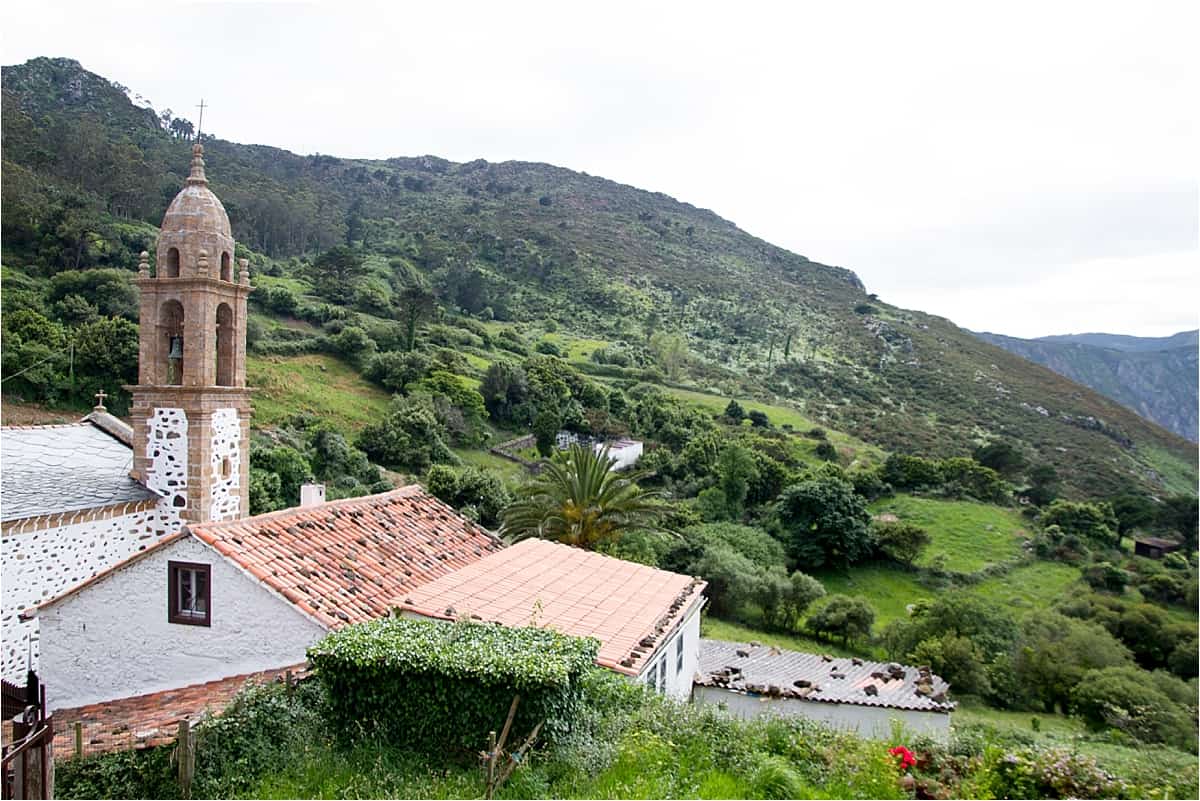
Your Galicia Road Trip Itinerary
Every coast is salty. But northwest Spain’s Galician coastline seems the saltiest of all: its landscape licked into shape by the churning, whirling waves, its cuisine at one with the sea and its architecture, history and general attitude shaped by the way that surf reaches the shore.
This is a place to experience the real side of Spain, away from tower blocks, fake paella and concrete-edged, crowded hotel pools.
Overdeveloped resorts, you know who you are.
And it’s an ideal spot for a self-drive holiday. Without further ado, here’s how to plan a Galicia road trip. Beaches, lighthouses and fine food await.
What’s So Special About Galicia?
In Galicia, the curves and swerves of the coastline resemble the fused sutures of the skull: intricate, delicate and yet immensely strong.
Few regions in the world are like this, the closest one to mention would be Ireland’s wild Atlantic way. In fact, should you set sail without a sail from that part of Ireland, Galicia is where you would wash up, as many monks did centuries and centuries ago.
- Recommended reading: how to plan a road trip by yourself
Start and Finish in La Coruña
With short flights from London and a car and sat nav on board, it’s easy to wiggle your way along the coast from La Coruña to Santiago de Compostela and enjoy an authentic Spain that few visitors get to see.
I cheated, a little, in this case. Heading off with a guide, a driver and a couple of good friends, this plan left me with more time to gaze through the windows, to stand on the clifftops and to track down some churros.
The fields may be green, the weather changeable, but some of the sweetest parts of Spanish culture still, of course, remain.
See also this article on unique things to do in Spain and Spain’s best road trip itineraries.
Your Galicia Road Trip Itinerary: Day by Day
This Galicia Road Trip works as a great introduction to the area for people looking to get a taste of the authentic side of Spain, far from crowds of tourists.
It includes winding turns along narrow roads that glide above the crashing surf, so it’s not for the faint of heart. You’ll find plenty of different stops, all short, and all with a focus on great views and great food.
I’ve added in some recommendations on restaurants and hotels to save you time. Enjoy!

Galicia Road Trip Itinerary: Day One
La Coruña makes the start and end of this Galicia Road Trip. It’s a moderate sized city with a UNESCO World Heritage site that’s quite the surprise.
To begin with, though, just get your bearings, hire the car and enjoy some great food.
Where to Eat
Try Arbore Da Veira.
- Modern local food, trendy decor with private areas.
- 10-course menu with 8 dishes and 2 desserts – 55 euros
- 15-course menu with 12 dishes and 3 desserts – 70 euros
Where to Sleep
- Hotel Riazor – a slightly dated place to rest but it’s right on the beach and with easy walking distance of cafes and restaurants.
Galicia Road Trip Itinerary: Day Two
Now it’s time to hit the road and start to get a sense of the area on this Galicia Road Trip. First stop is…
Pontedeume
This seaside town combines side streets, old churches, forts and more and is a joy to walk around for an hour. Make an early start to catch the fresh seafood market and look up to catch the best of the Galician balconies: enclosed in glass because it does like to rain a lot here.
Walk uphill to reach the Igrexa de Santiago church, a 16th century chapel built by Don Fernando de Andrade.
Take a Boat Trip to Redes
In good weather, the short boat trip to Redes gives you the feel of the salty nature of Galicia. Redes is a picturesque fishing village with colourful houses best seen from the water.
Stop for a small churros y chocolate or early coffee, before heading back to your car.
- Book a boat trip through Alta Vela.
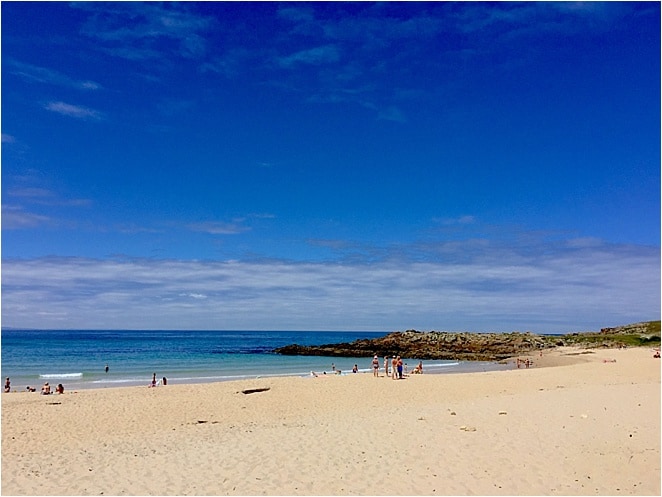
Praia de Doniños Surf Beach
It’s a short drive from Pontedeume to the laid back surfer beach of Prai de Doniños. While you’ll find sand, long grasses and dunes, it’s a wild place with a small beach bar and no blaring soundtracks.
Lunch at Leira Antiga
Spain eats late, even in the north, so don’t head here before about 2pm. Leira Antiga is a hotel and restaurant with a stunning outdoor terrace that overlooks the bay of Cedeira.
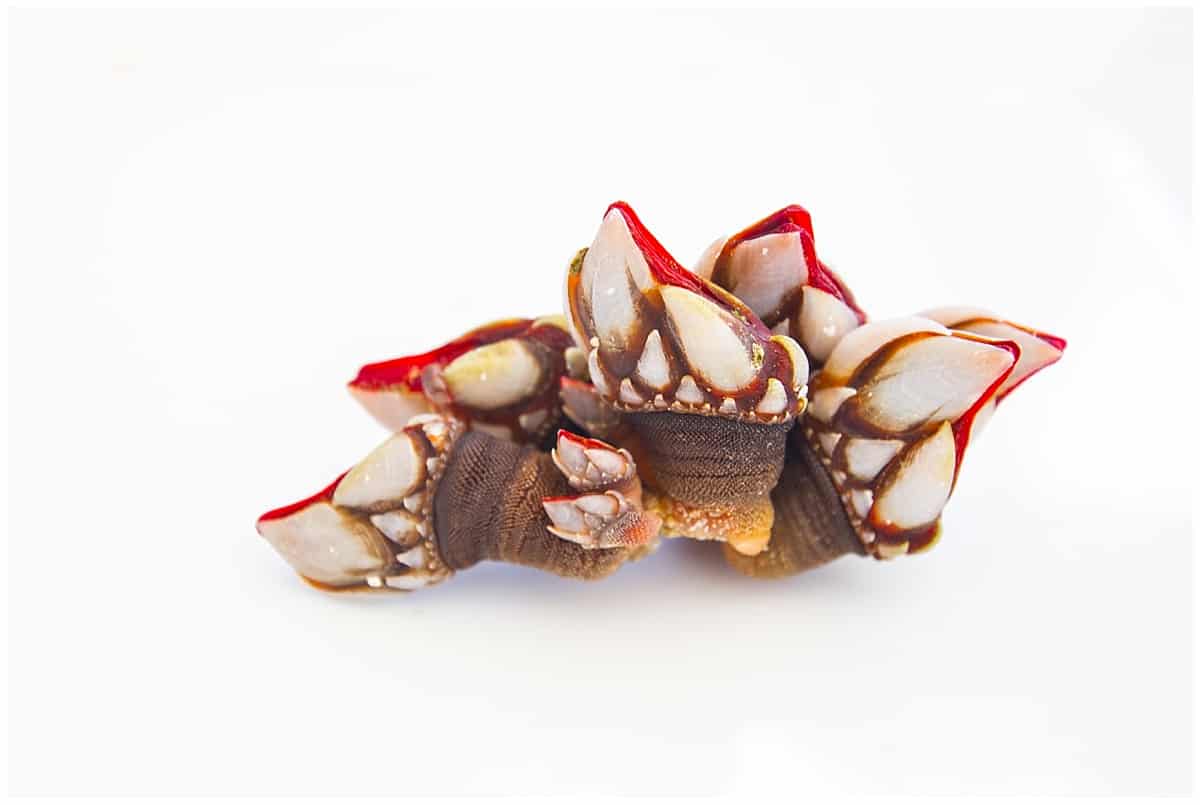
Blistering Barnacles
With miles and miles of coastline peppered with fishing villages, it’s no surprise that Galicians love their seafood.
Make sure to try the barnacles. Though they look like dinosaur claws, they’re surprisingly tasty, served freshly cooked and dripping with their own juice.
San Andrés de Teixido
“If you don’t come when you’re alive, you’ll visit when you’re dead.” So begins the spooky legend of the small clifftop village of San Andrés de Teixido.
Walk through cobbled paths cloaked in green to reach the sanctuary where locals leave wax relics of dismembered body parts by the altar.
Vixía de Herbeira Viewpoint
At 621 metres, the Vixía de Herbeira viewpoint lives on one of the highest cliff faces in Europe. On the proverbial clear day, you can sometimes see the Sisargas Islands and Estaca de Bares Point.
Even on a cloudy day, it’s worth the hair-raising drive. The clouds and swirling winds give a sense of menace and of great, wide open spaces that hide secrest in the wind.
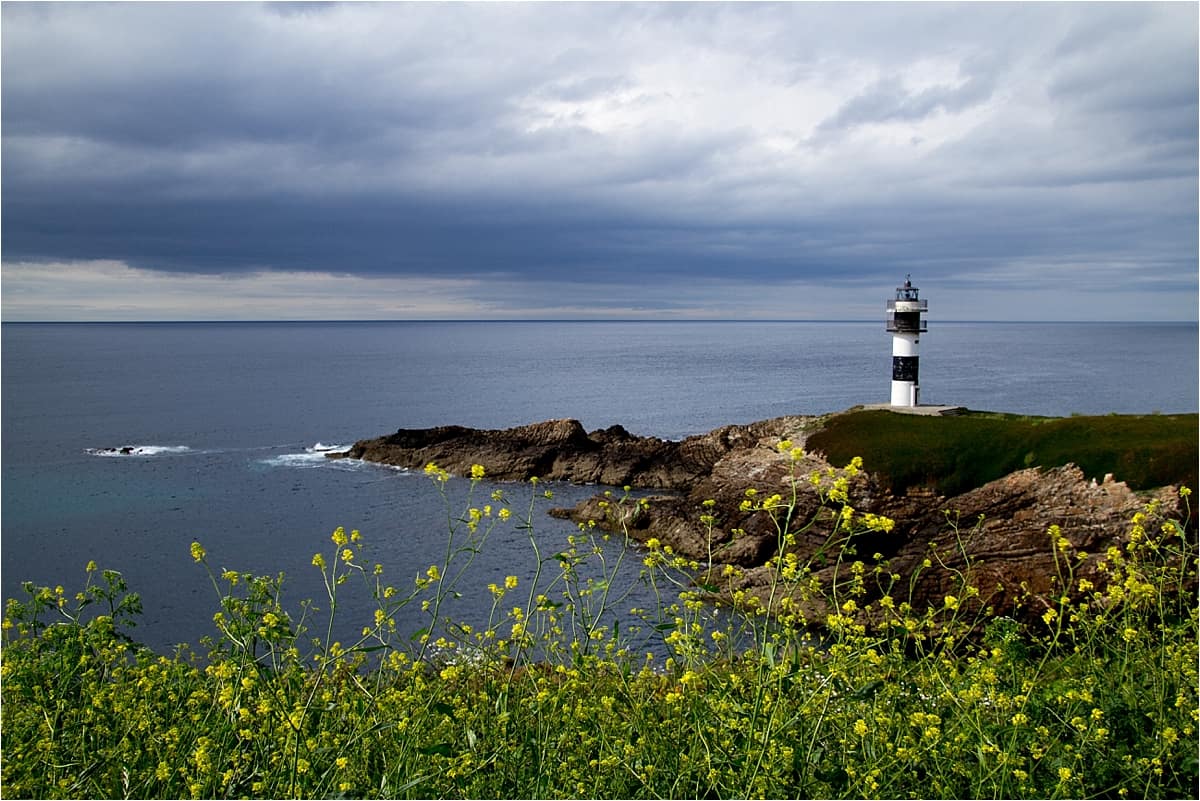
Faro de Cabo Ortegal Lighthouse
Isolated and exposed, the Faro de Cabo Ortegal Lighthouse further cements the position of Galicia as a land dominated by the sea. Built in 1984, it’s squat red and white silhouette isn’t the main draw. But the views of the swirling surf and screeching wind make this place seem otherworldly.
Parking is easy and windy paths run along the top.
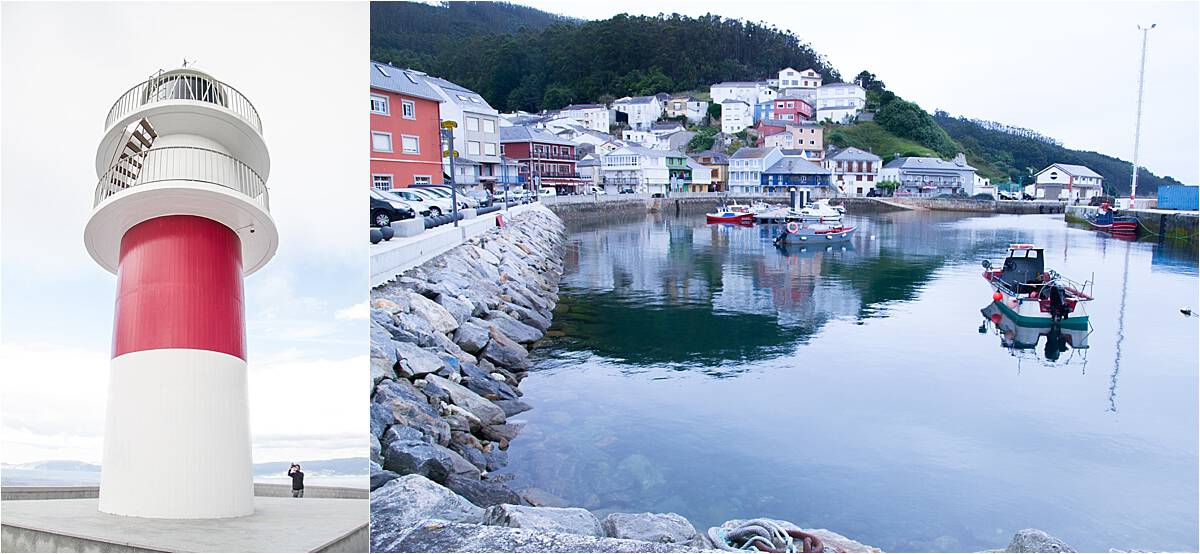
Galicia Road Trip Itinerary: Day Three
Porto do Barqueiro
Fresh from a Norwegian fjord, the small fishing village of Porto do Barqueiro mixes pretty colourful houses with rough and ready fishing equipment.
Viveiro
In ordinary times, Viveiro would seem like a small town. But after snaking through the hamlets and fishing villages of northern Galicia, Viveiro starts to feel huge.
Its city wall gate imposes and the stone-covered streets and stony buildings loom large. It’s good for a walk around, a mid morning churros and any shopping you may want to do.
If you’ve a taste for monuments, look for Iglesia Santa María do Campo, the oldest church in Viveiro with stone brickwork dating back to the 12th century.
Also, consider the Capilla de San Roque church and enjoy the view of the Río Landro and the ocean just outside the Old Town.
Faro de Punta Roncadoira Lighthouse
Drive further onto the rocky cliffs as this Galicia road trip itinerary returns to the sea. Built in 1984 and standing 80 metres tall, the Faro de Punta Roncadoira Lighthouse brushes away any cobwebs from the night before.
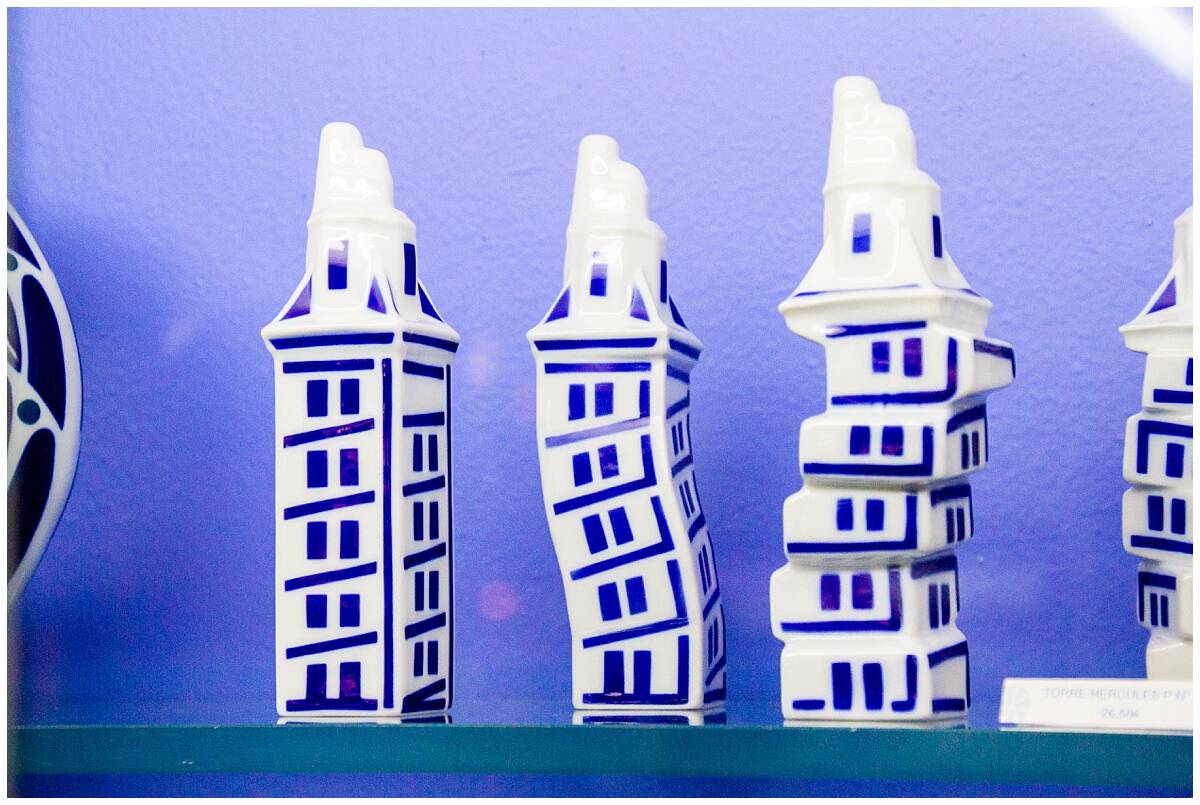
Fabrica de Ceramica de Sargadelos
By now, you’ve probably noticed the striking blue and white ceramics at tapas bars, taveranas and homes. They come from Sargadelos, a 19th century company from Galicia. You can visit their showroom and glimpse their historic factory.
Lunch at Home
Casa do Mudo is a restaurant and hotel set in an old farm house with granite walls and original wooden beams. They serve homemade traditional food in enormous portions, exceeded only by the warmth and friendliness of the owners.
Praia das Catedrais
Praia das Catedrais is known to locals as Cathedral Beach thanks to the astonishing rock formations and caves that appear during low tide. Cathedral-like arches can appear up to 30 metres high and the sight is so popular that entrance tickets are now required. Buy your Praia das Catedrais ticket here.
Faro de Illa Pancha Island and Lighthouse
Add this place to your lighthouse list on account of its staggering 360 degree views of the Cantabrian Sea.
Where to Sleep: Parador de Ribadeo
Make the most of the great Spanish tradition of converting historical buildings into accessible hotels by spending a night at the Parador de Ribadeo.
It overlooks the estuary with spacious, unpretentious rooms and serves up a good, Galician breakfast.
Ribadeo itself is a moderately lively port with a scattering of cafes and bars. Dine at Restaurant San Miguel on the marina for great service and a view of the bridge and estuary.
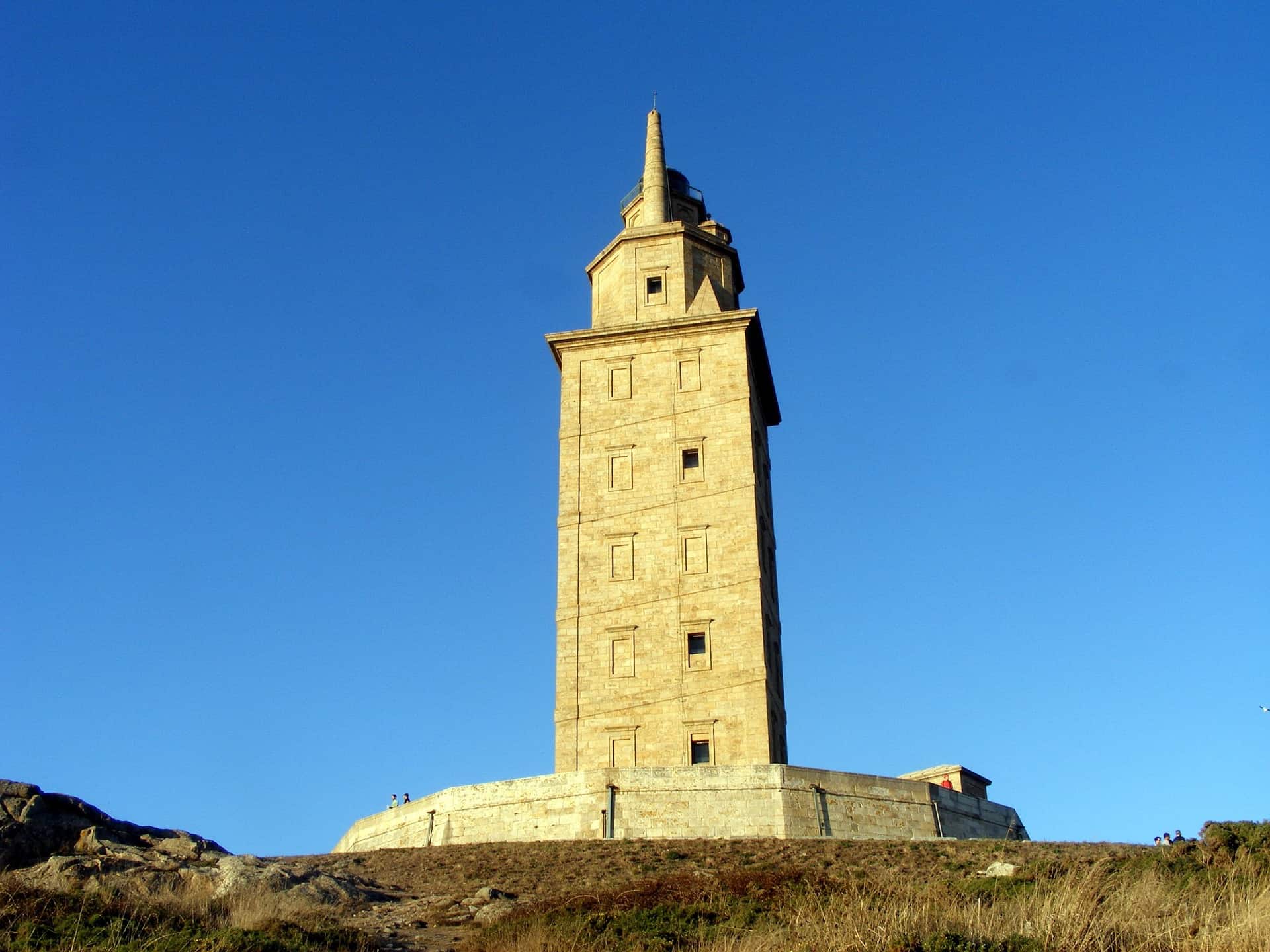
Galicia Road Trip Itinerary: Day Four
Take the time, if you can, to spend time in the narrow streets of salty, no nonsense La Coruña before heading back to the airport.
But if you don’t have time to laze around before catching your flight back home, be sure to visit the lighthouse of Galicia. The one, the only, the oldest functioning lighthouse in the world…
The Torre de Hércules Lighthouse
The “Tower of Hercules” lighthouse is the oldest Roman lighthouse still in use. It is incredible to think of people laying the stones for this concept over 2000 years ago and seeing the same view of the La Coruña harbour, coastline and city.
It costs only 3 euro to climb to the top and as befits a UNESCO World Heritage Site, it has an informative and immersive education centre underground.
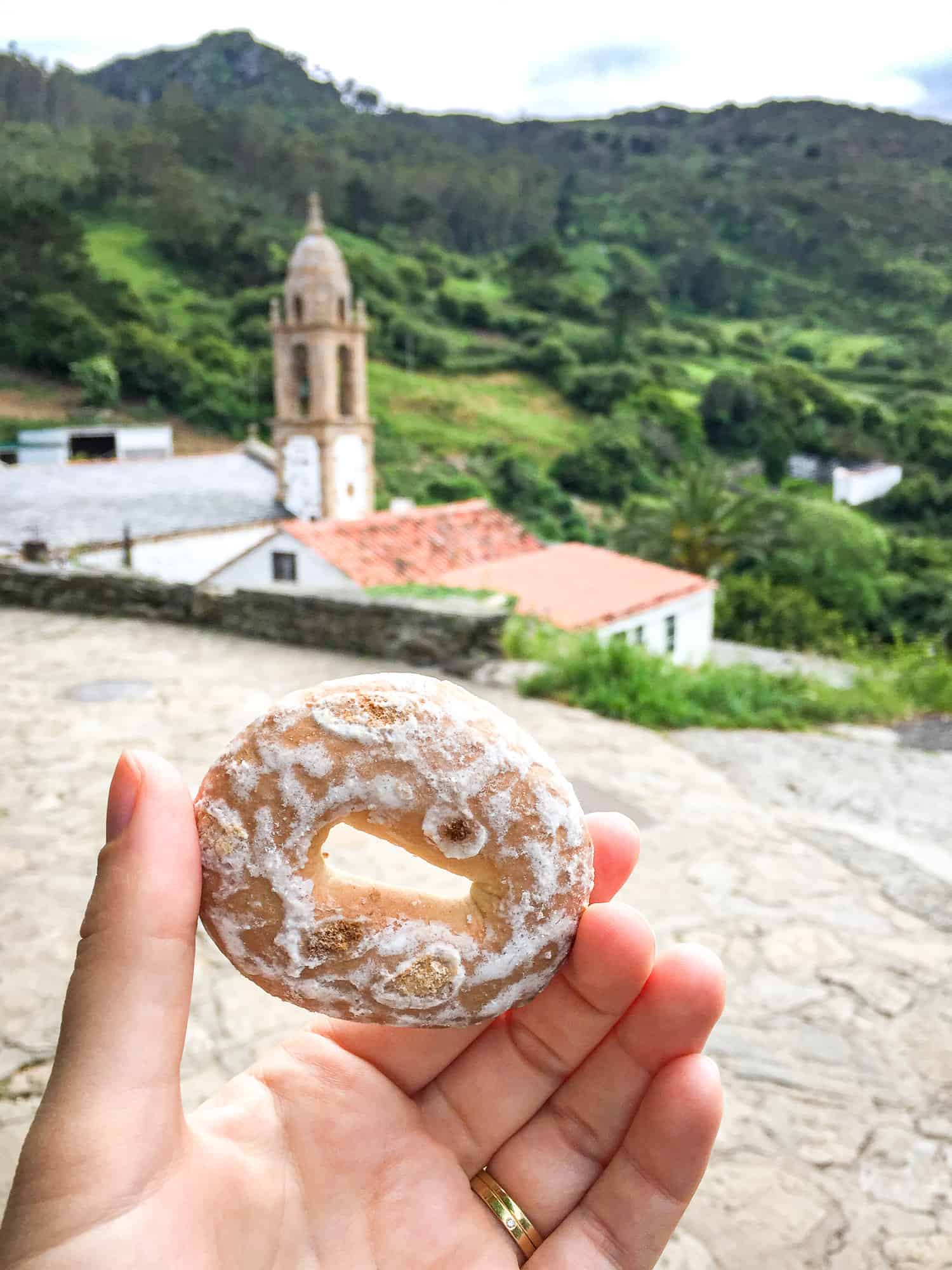
More About Galicia
Galicia’s Curious Geography
Galicia’s distinctive landscape, a mix of lakes, valleys, soft-sand beaches and ferocious, raging-black cliffs, results from a blip in geography.
Like most places, valleys developed as the rivers ran into the sea. Years ago, when the sea levels rose, cutting off Britain, the coastline of Galicia flooded. The sea flowed inland across the rivers, creating marshy, wide rias you can still see today.
It’s these rias that explain the extended, Loch Ness monster-like bridges.
And it’s these rias that explain the high quality, ubiquitous seafood.
Galician Lighthouses
It’s Galicia’s coastline that creates its lighthouse trail: from black and white and candy-striped red right to the oldest functioning lighthouse in the world, the UNESCO World Heritage Site Roman lighthouse in La Coruña.
In short, and much as I hate the overused term, a road trip along Galicia’s coastline provides a real taste of the real Spain. And yes, everything we experience is real, no matter where we are.
But. Well. You know what I mean…
A Special Place to Stay in Galicia
The name El Castaño Dormilón means sleeping chestnut, a term referring to the local saying and also the heavy presence of wood in this restored place of childhood learning.
Inside this former village school, the rooms were awash with white and light. My suite at the top of the house bore skylights that seemed to reach and kiss the trees.
It’s a rare place that can successfully marry minimalist chic with gnarly wooden beams, but owners Mónica and Alex pull it off and with aplomb.
They’re friendly and welcoming, yet know when to step back and allow their guests some privacy.
Mónica used to work in the arts magazine trade in Barcelona, on the other side of the coast, perhaps explaining her eye for artistic detail. A bold splash of colour here, a scroll of poetry there.
Rooms have different themes and colours, although all look as though they belong. The white suite on the top floor has a dressing area, desk and free wifi, jacuzzi jet bathroom with transparent walls to the rest of the room. Beyond the skylights, normal windows open up into the trees, creating the idea, I’m sure, that this is a luxury treehouse for grown-ups.
A Smegg kettle and teacups provide a morning pick-up before taking the lift downstairs.
The open spaces downstairs seem designed for reading, eating, or quiet contemplation.
Mónica and Alex serve up traditional Galician seafood: crusty bread and lemon-zested shellfish.
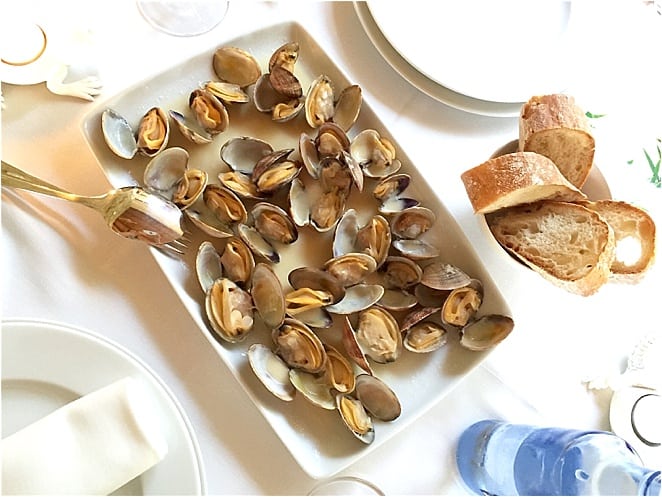
What I Loved about El Castaño Dormilón
- The cool blend of chic white and renovated wood.
- The trees in the skylight.
- The small, artistic touches throughout.
- The caring consideration of dietary restrictions.
- Comfy bed. Very.
- Hassle-free fast wifi
- Great service: friendly but not intrusive
- Disabled access
- The approach to renewable energy
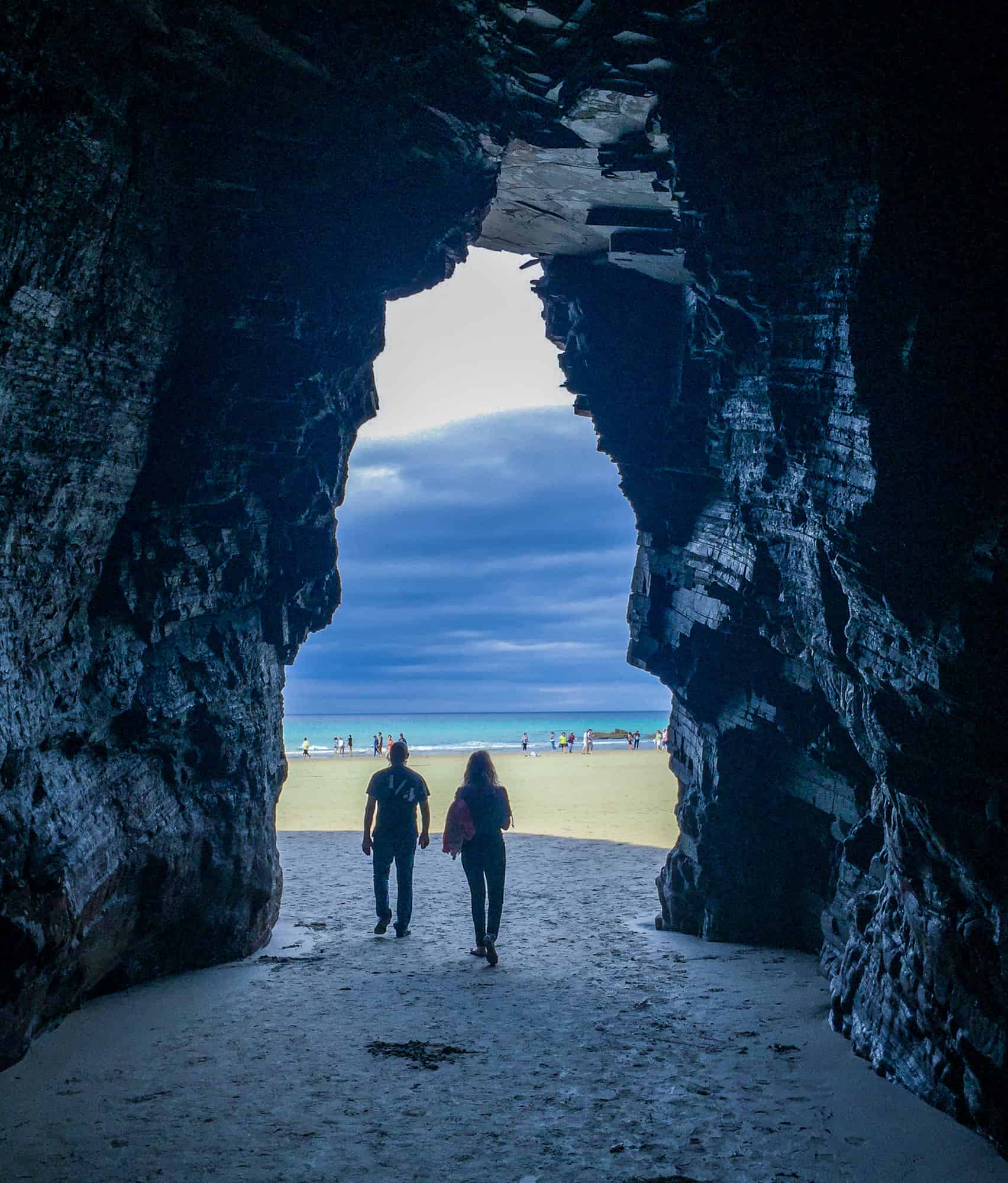
Practical Details for Your Galicia Itinerary
Make sure your Galicia itinerary runs smoothly with the following tips and suggestions:
When to Visit Galicia
Spain may have a reputation for sunny good weather, but the northwest coast where Galicia lies is green for a reason. Rain and wind blow through here as they do in Ireland, making it beautiful but not always suitable for a laze on the beach kind of adventure.
Any time between May to October should be pleasant enough, though.
Is Galicia Safe?
Absolutely. Galicia is one of the safest regions in the world.

What to Pack for Galicia
- Beachwear with warmth – think wetsuits for surfing, not just bikinis and board shorts.
- Pack a two-pronged EU adapter.
- It’s always wise to pack both waterproofs and sunglasses and sunscreen.
- Check out our ultimate packing list here.
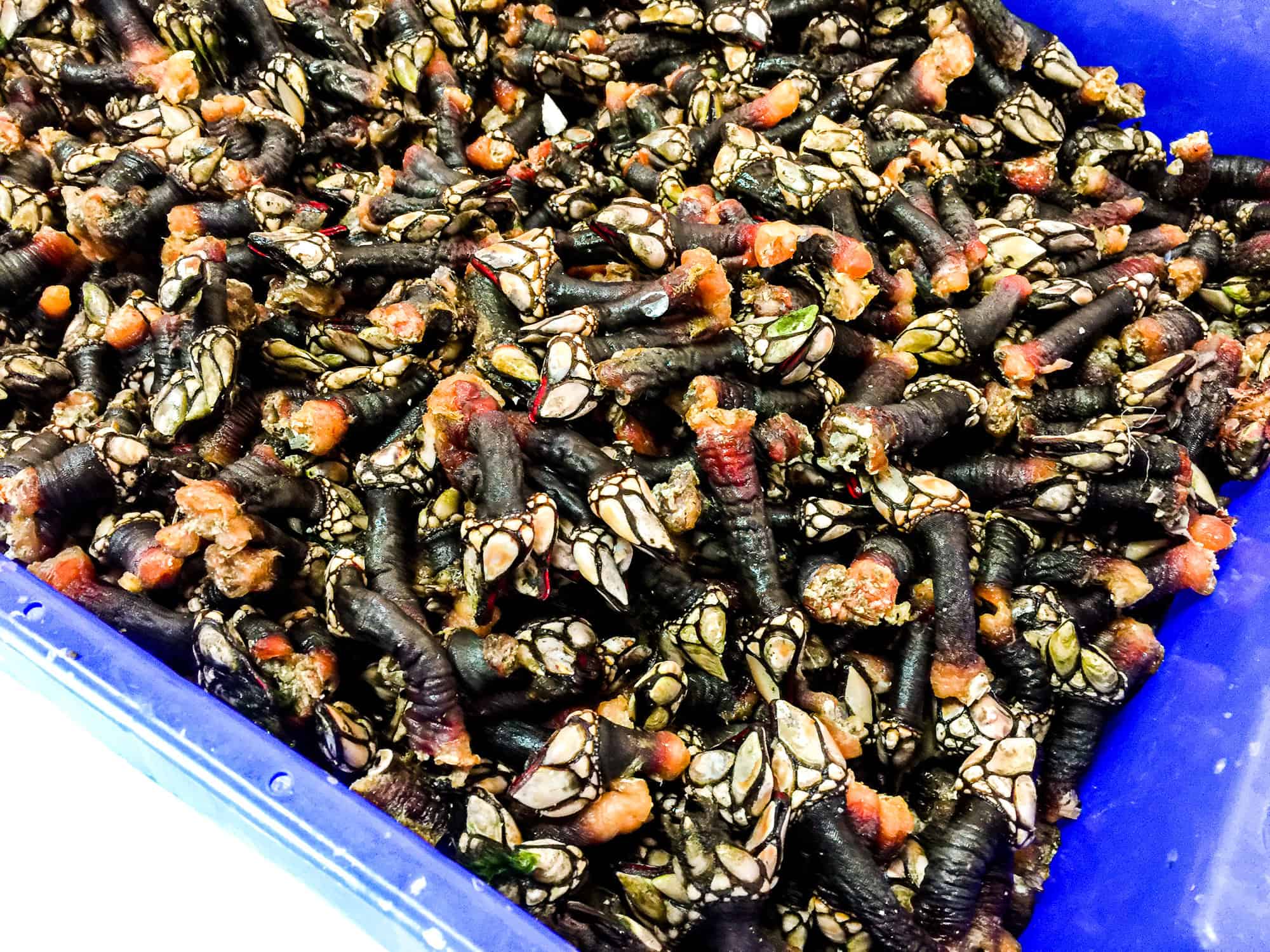
Is Galicia Worth Visiting?
Galicia represents a corner of Spain that most visitors miss. It is deep, deep green with rocky coastlines and centuries of traditions and pilgrimages. In short, Galicia is definitely worth visiting!
Disclosure: I travelled to Galicia, Spain as part of a project between Captivate and the Spanish Tourist Board. As ever, as always I kept the right to write what I like. Otherwise I lose the will to even enjoy my churros. Life is just too short. If you book our buy through these links, I may earn a small commission at no extra cost to you. Thanks!

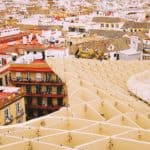
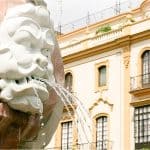

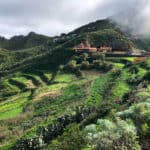
I’m grateful you tracked down those churros so easily :)
I am nothing if not dedicated to my craft…!
Lovely read as always :) the food looked gorgeous and Spain as always never disappoints.
Ah, thank you! Yes, you can’t go wrong with churros…and the seafood was quite the exploration!